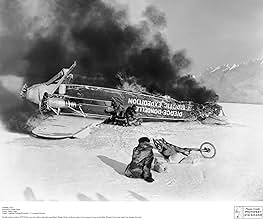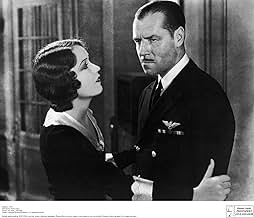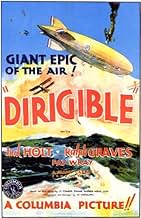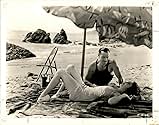Jack Bradon is tasked to reach the South Pole with a dirigible.Jack Bradon is tasked to reach the South Pole with a dirigible.Jack Bradon is tasked to reach the South Pole with a dirigible.
- Awards
- 2 wins total
Emmett Corrigan
- Rear Adm. John S. Martin
- (as Emmet Corrigan)
Richard Alexander
- Radio Operator
- (uncredited)
Bess Flowers
- Party Guest
- (uncredited)
George 'Gabby' Hayes
- Parade Official
- (uncredited)
Edward Hearn
- Admiral's Aide
- (uncredited)
Selmer Jackson
- Lt. Rowland
- (uncredited)
Eddie Kane
- Lakehurst Radio Announcer
- (uncredited)
Kenneth MacDonald
- Lt. Fogarty
- (uncredited)
Adrian Morris
- Dirigible 'Los Angeles' Crewman
- (uncredited)
William H. O'Brien
- Sailor
- (uncredited)
Broderick O'Farrell
- Doctor
- (uncredited)
- Director
- Writers
- All cast & crew
- Production, box office & more at IMDbPro
Featured reviews
Okay, I know, they are not blimps. They are Zeppelins. "Airships" was the preferred term by the U.S. Navy.
This is a very exciting action film for 1931. Apparently made with quite a high budget. I saw model shots, large sound stages filling in for Antartica, thousands of extras, real airships, and a gigantic ticker tape parade shot on location in New York City. All of these things cost much money. The U.S. Navy's use of airships was so brief that this film also marks one of the few stories about this chapter in our military history.
This film proves that Capra was also adept at high intensity action directing (for 1931) as well his usual character-driven morality plays that he became so well-known for.
The one thing that is the most striking to me about (some) early talking pictures, of which this is one, is that they have hardly any music score. This is true here, and only adds to the isolated feeling in the scenes of the doomed expedition struggling to escape from the frozen tundra. Plenty of sound effects in the scenes of the doomed Pensacola going down, but no music. In fact, the film even uses a few silent film style narration cards.
Anyway, in spite of this film dating from 1931, it has aged really well and doesn't seem too dated at all. A nice action/adventure film. The print they showed on TCM on television was in very good shape, even the sound was strong in most places. Yes, the love story seemed tacked on, but there are thousands of films in the history of Hollywood that could have survived artistically with their romantic subplots (probably inserted at the insistence of cigar-chewing studio bosses to get "the female market") jettisoned. In any case, this movie is quite entertaining and Worth checking out.
This is a very exciting action film for 1931. Apparently made with quite a high budget. I saw model shots, large sound stages filling in for Antartica, thousands of extras, real airships, and a gigantic ticker tape parade shot on location in New York City. All of these things cost much money. The U.S. Navy's use of airships was so brief that this film also marks one of the few stories about this chapter in our military history.
This film proves that Capra was also adept at high intensity action directing (for 1931) as well his usual character-driven morality plays that he became so well-known for.
The one thing that is the most striking to me about (some) early talking pictures, of which this is one, is that they have hardly any music score. This is true here, and only adds to the isolated feeling in the scenes of the doomed expedition struggling to escape from the frozen tundra. Plenty of sound effects in the scenes of the doomed Pensacola going down, but no music. In fact, the film even uses a few silent film style narration cards.
Anyway, in spite of this film dating from 1931, it has aged really well and doesn't seem too dated at all. A nice action/adventure film. The print they showed on TCM on television was in very good shape, even the sound was strong in most places. Yes, the love story seemed tacked on, but there are thousands of films in the history of Hollywood that could have survived artistically with their romantic subplots (probably inserted at the insistence of cigar-chewing studio bosses to get "the female market") jettisoned. In any case, this movie is quite entertaining and Worth checking out.
A reasonably decent motion picture for its time, the one attribute that makes this film stand out from its standard storyline, is its footage and scenes regarding dirigibles. When this film was released in 1931, it was the golden age of zeppelin travel, and the crash of the Hindenburg, which doomed this type of transportation, was still five years in the future. There were numerous scenes shot at Lakehurst Naval Air station, where ironically the Hindenburg crashed, that was the center of dirigible activity at the time for the U.S. Navy. As someone who is interested in this subject, I found this part of the movie fascinating as well as the part of the story that took you behind the scenes of airship travel and how much danger could be involved. The riveting scene dealing with the crash of a dirigible in a violent storm brought to mind the U.S. Navy zeppelin Akron, launched the same year as this film, which was destroyed in a similar storm only two years later. It was also interesting to see actress Fay Wray two years before she would gain fame with her role in King Kong. I had the opportunity to catch this film recently during an airing on the TCM cable channel and would recommend it for anyone with a similar interest.
As we watch the Twentieth Century disappear in our wake, we're going to find films like this more and more precious. I mean, can you imagine? -- Here's a film that takes the airship absolutely seriously as an equal partner with the airplane. Here's a film that shows you basically how an airship was constructed and what it looked like inside, and all that as part of the plot! And if you're going to interrupt the main plot with a soap opera, who better to put in front of your eyes than the beautiful Fay Wray? And what a great way to get out of the romantic sub-plot's basic dilemma -- nice, clean, and fast. All things considered, a more than satisfying way to spend an evening.
I liked this film for it conveys a can-do-attitude that was so prevalent in America at that time. This movie was made (1931) in a time when man was just beginning to test the limits of himself, machine, and the elements (it was only 5 years earlier in 1927 that Limbergh crossed the Atlantic in the Spirit of St. Louis.) This movie focused on the race to the south pole and it made for good entertainment. The special effects for the time were very good.
The human interest aspect of the film showed the negative side of ambition (how it affected a marriage and a friendship)this I found interesting. The character development in the one, Frisky, was especially satisfying.
I would recommend this movie to anyone--however do not compare it to the movies of our time--that would be a disservice to the movie.
The human interest aspect of the film showed the negative side of ambition (how it affected a marriage and a friendship)this I found interesting. The character development in the one, Frisky, was especially satisfying.
I would recommend this movie to anyone--however do not compare it to the movies of our time--that would be a disservice to the movie.
Lakehurst, the setting for much of this film was the epicenter of American ballooning and dirigibles, before the second world war and through it as well. A recent book, _They sailed the skies : U.S. Navy balloons and the airship program_ led me to this film, since it represents an easy way to get a look at some of the men and machines in action. Frank "Spig" Wead is the writer and Frank Capra directs. Wead of course was a flyer himself and only turned to writing after a crash broke his neck, crippling him. See WINGS OF EAGLES by John Ford for a dramatization of his life. The early sound era is not known for the sleekness of it's screen story-telling, but if you have interest in the history of zeppelins, or pre-WW2 aviaton, this film is worth watching.
Did you know
- TriviaThe production was shot during a California heat wave. To form vapor on the breath and give the impression that the pilots were in the Antarctic, the performers were given lumps of 'dry ice' (frozen carbon dioxide) in metal boxes to put in their mouths. Hobart Bosworth found the box cumbersome and simply put the ice in his mouth. He lost his tongue and most of his lower jaw.
- GoofsThe name of this Dirigible was the USS Pensacola but there was already a USN heavy cruiser of the same name that was in service since 1928 when this movie was made. The Navy does not assign duplicate names to ships/air ships in service at the same time.
- ConnectionsFeatured in Frank Capra's American Dream (1997)
- SoundtracksAnchors Aweigh
(1906) (uncredited)
Music by Charles A. Zimmerman
Lyrics by Alfred Hart Miles and R. Lovell
Played during the opening credits and often in the score
Sung by guests at a party
Details
- Release date
- Country of origin
- Language
- Also known as
- Dirižabl
- Filming locations
- San Gabriel Valley, California, USA(South Pole scenes)
- Production company
- See more company credits at IMDbPro
Box office
- Budget
- $1,000,000 (estimated)
- Runtime1 hour 40 minutes
- Color
Contribute to this page
Suggest an edit or add missing content






































